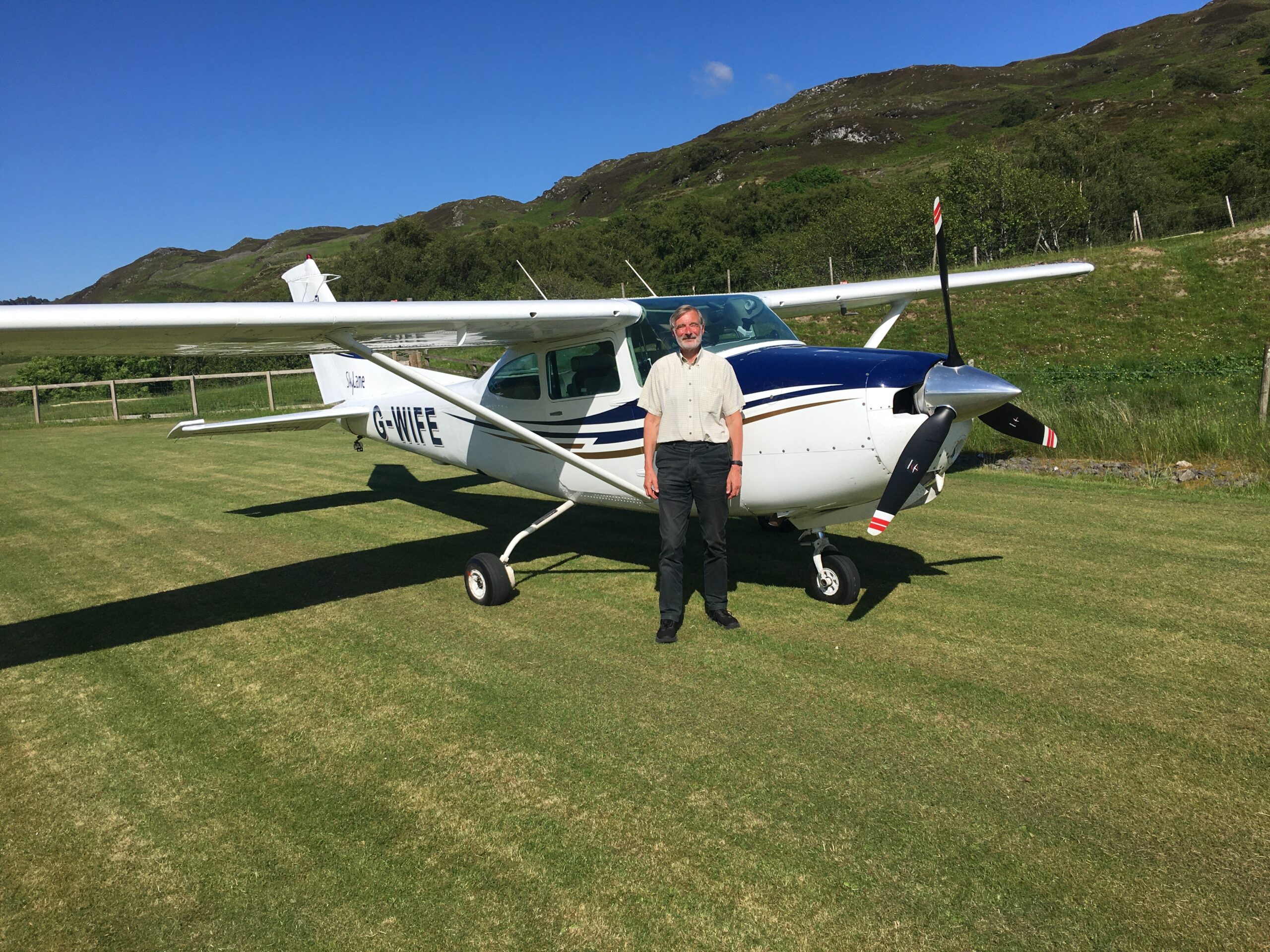It’s the end of an era for James. After nearly thirty years of solo flying and anno domini finally on the cards this is his last tour of the remote landing strips created during World War II in the Highlands and Islands of Scotland. Many are now beautiful windswept fields edged with yarrow, daisies and machair, and populated by lone sheep. In good weather the panoramic views are spectacular., and James loved it. He would often say “the beauty of God’s world is breathtaking from the air”, adding that “flying in a straight line is easy – it’s the challenges of take-off and landing that I really enjoy!” So, let’s follow him on a final tour with WIFE.
Planning the flight route always begins with checking the weather forecast and making a mental note of where to spend the night if it should turn inclement. Then, phone ahead to the airfield, request permission to land, sort out the landing fee, check aviation fuel – its provision is patchy in the Highlands, and complete safety checks. Lastly, pack thermos and sandwich! After take-off remember to advise your destination of your intention to land. James once radioed ahead to a farm to let them know he was coming in to land in their field. While circling overhead he could clearly see the farmer’s wife leave the house, mount a tractor, and chug her way towards him, all ready to collect the £5 landing fee!
The western Isle of Barra in the Outer Hebrides was one of James’s favourite destinations . Barra’s tiny airport is the only commercial one in the world which uses the beach as a runway (Loganair’s 18-seater twin otter turboprop flies in regularly from Glasgow). The approach is not easy – there are no signal lights or runway markings and only a couple of posts in the sand for guidance. There is also usually a strong wind to contend with, and too heavy a landing can get a planes wheels sink into the sand. But the specific challenge for Barra is to factor in the times of the North Atlantic sea tides. Since the beach is the airport, if the tide is in the runway will be completely flooded. As a result flight time frames must be dictated by nature and aircraft can only land or take off when the tide is out. James always enjoyed the mental calculations required in these additional challenges, and his final flight to Barra on a nice day with his beloved WIFE was one of the best.

